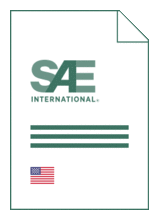Standards Worldwide
Standards Worldwide
Phone +49 30 58885700-07

Standard [CURRENT]
SAE J 2962/3:2024-02-27
Communication Transceivers Qualification Requirements - Ethernet
- Publication date
- 2024-02-27
- Original language
- English
- Pages
- 59
- Publication date
- 2024-02-27
- Original language
- English
- Pages
- 59
Product information on this site:
Quick delivery via download or delivery service
Buy securely with a credit card or pay upon receipt of invoice
All transactions are encrypted
Short description
This SAE Recommended Practice covers the requirements for ethernet physical layer (PHY) qualification (and as applicable to other high-speed networks [i.e., Audio Bus, LVDS, Ser-Des, etc.]). Requirements stated in this document provide a minimum standard level of performance for the PHY in the IC to which all compatible ethernet communications PHY shall be designed. When the communications chipset is an ethernet switch with an integrated automotive PHY (xBASE-T1), then the testing shall include performance for all switch PHY ports as well as each controller interface. No other features in the IC are tested or qualified as part of this SAE Recommended Practice. This assures robust serial data communication among all connected devices regardless of supplier. The goal of SAE J2962-3 is to commonize approval processes of ethernet PHYs across OEMs. The intended audience includes, but is not limited to, ethernet PHY suppliers, component release engineers, and vehicle system engineers.
Loading recommended items...
Loading recommended items...
Loading recommended items...
Loading recommended items...
